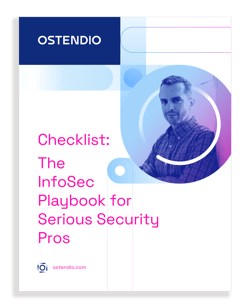The Ultimate Guide to GRC: Tools and Solutions
Whether you’re a CISO, CTO, or COO, you want to set up your organization for success when it comes to governance, risk, and compliance. However, there is a lot to know about GRC and the tools that can support your goals. This guide is a resource for organizations looking to learn about GRC and the solutions that can help drive efficiencies around security and compliance.
Topics covered in this guide:
- What is GRC?
- What's driving the growth of GRC?
- What's the difference between GRC and IRM (Integrated Risk Management)?
- Why your company needs GRC
- Benefits and features to consider when choosing a GRC tool
- How to build a business case for a GRC tool
- GRC solution alternatives
The InfoSec Playbook for Serious Security Pros
Never fall behind on your security tasks
Daily systems monitoring... monthly policy reviews... annual compliance trainings... the list goes on. Download this complete InfoSec checklist to conquer your security tasks like a pro.
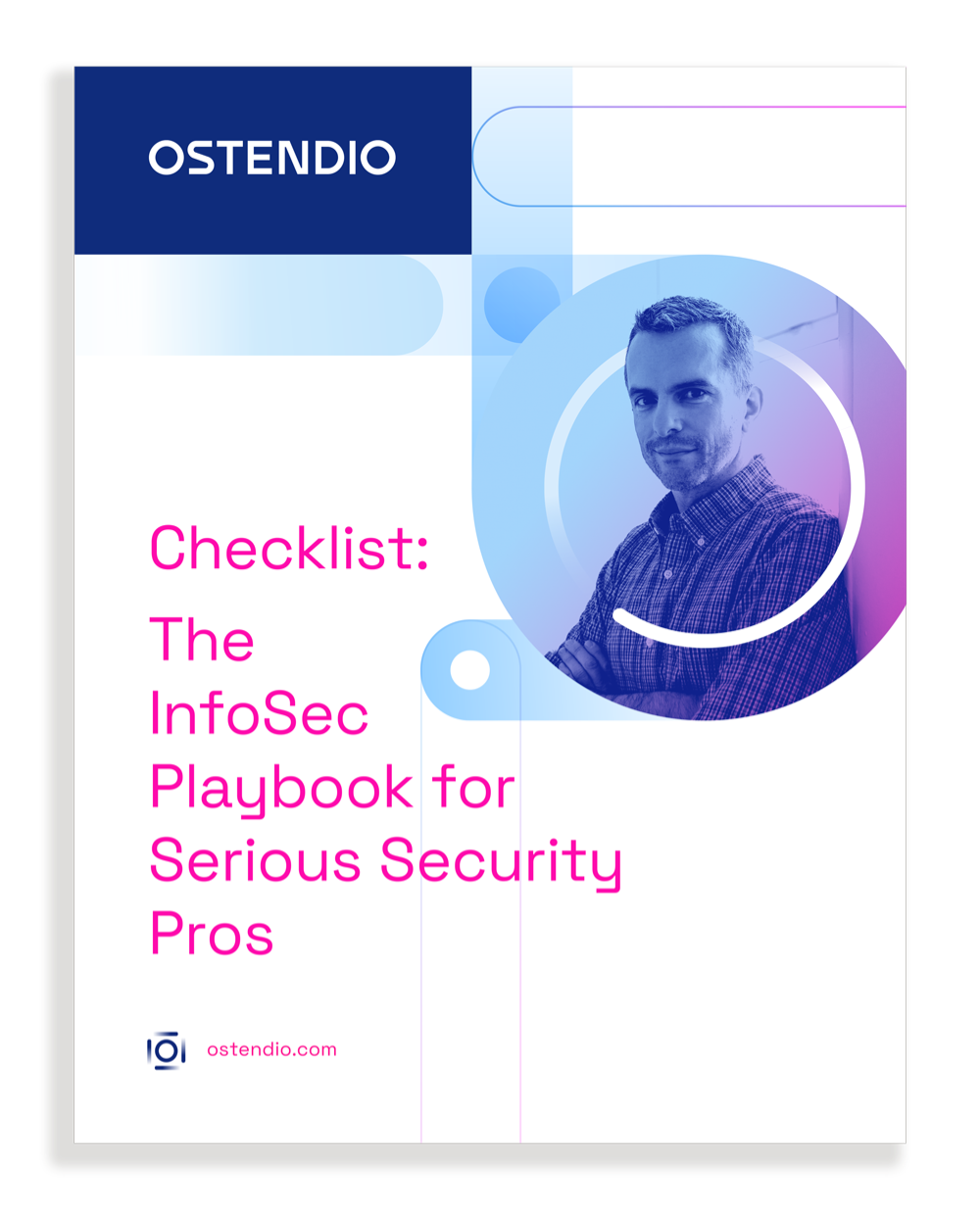
What is GRC?
Governance, Risk and Compliance Explained
Governance, risk, and compliance, better known as GRC, is an organization’s internal approach that encompasses three key strategies into one that aims to help achieve business objectives around an organization's information security and risk management programs.
GRC is designed to enable an organization to improve processes, manage technology, mitigate risk associated with information security. It also ensures employees partake in ethical and secure business practices, while enabling executives to make more informed decisions. GRC also promotes stronger communication across the extended enterprise.
Think of GRC as the guardrails on a highway wrapping around a mountain as you climb your way to the top. With the right GRC program, your organization can stay the course with improved processes (such as stronger communication and repeatable operations) and effective risk management all while achieving your goals with peace of mind.
Below is a quick breakdown of the three individual practices that, when working together, create the success that is GRC.
- Governance pertains to how an organization is controlled and directed. As the name suggests, governance is the portion of GRC that consists of rules, processes, and standards implemented to ensure activities align properly with business goals. Overall, governance matters regarding ethics, accountability, resource management, and management controls.
- Risk Management is the process of identifying, analyzing, and responding appropriately to risks that could negatively impact an organization’s business objectives. A risk management program should provide improved visibility into potential organizational security risks and help identify operations that could lead to business failure, in addition to identifying other cybersecurity threats.
- Compliance is the practice of ensuring that an organization follows the rules and regulations defined by regulatory agencies, as well as adhering to security frameworks and governance standards. It’s always necessary for a company to adhere to the right laws and regulations to avoid penalties due to non-compliance.
Serious security people go beyond GRC.
Schedule a Demo
What’s driving the growth of GRC?
With the growth of GRC adoption, more GRC platforms are entering the market.
The global enterprise market is expected to reach $97.3 billion by 2028 (up from $39.5 billion in 2021). With GRC poised to maintain this pace, one might wonder what’s causing this rapid adoption?
Compliance requirements are becoming more complex
One reason GRC tools have grown in popularity is the growing complexity of compliance and changing information security regulations. For some industries, such as finance and healthcare technology, regulatory requirements exist on a more varied, yet stringent scale, making GRC that much more effective for organizations that need to remain flexible and prepared for compliance changes.
Failing to comply with industry standards can lead to costly penalties, damaged business credibility, and risk to company data.
There are good reasons regulations like GDPR (General Data Protection Regulation) in the EU and CCPA (California Consumer Privacy Act) exist to protect consumer data. When an organization doesn’t comply with industry legislation, this is not only reckless, but also demonstrates a perceived lack of organizational priority to protect the data and livelihoods of its consumers, employees, and partners.
With the help of the right GRC program, organizations can streamline their compliance efforts and eliminate the likelihood of non-compliance or related financial penalties.
The growing risk and increased vulnerability to organizations
Cyber threats continue to rise, from ransomware to insider threats, so traditional IT measures are no longer enough to protect organizations. System vulnerabilities, employee fraud, and political tension (to name a few) are all reasons you need a unified digital approach to cybersecurity.
Ransomware attacks have increased by over 93% since the beginning of 2021, so having a GRC plan in place with the increasing risk landscape can help companies address the vulnerabilities they may face today by offering an always-on approach to cybersecurity.
Does GRC fit your needs?
Read our blog to find out if a GRC tool is the right solution to empower your people to be secure.
What is the difference between GRC and IRM (Integrated Risk Management)?
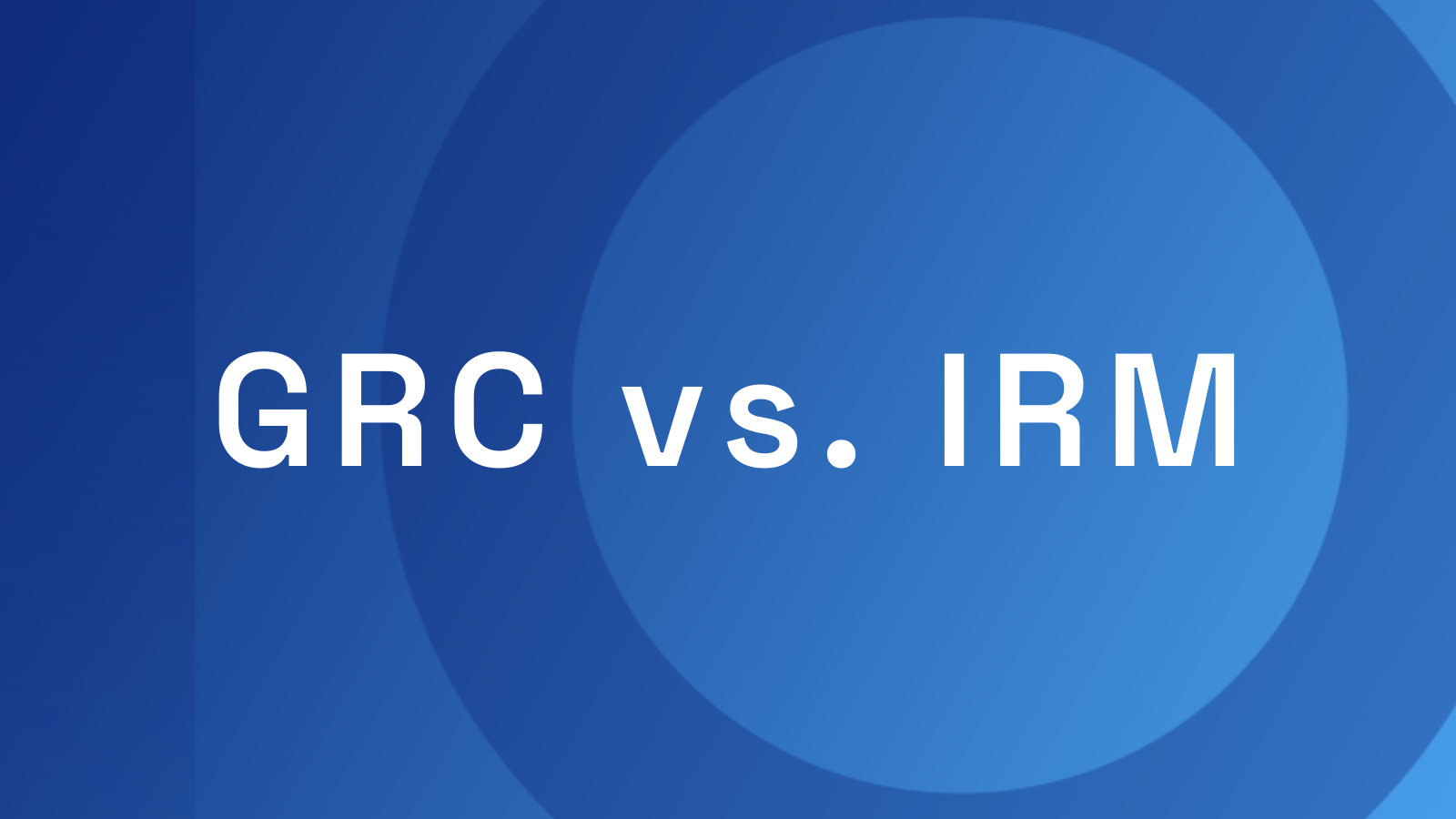
Think of IRM as the “R” in GRC.
GRC and IRM are similar in that they both entail risk management programs, but the key difference is that GRC employs two additional components: Governance and Compliance.
IRM stands for Integrated Risk Management and consists of policies solely focused on risk management, while GRC is majorly compliance-focused, while also incorporating risk management into the mix.
According to Gartner, “IRM is a set of practices and processes supported by a risk-aware culture and enabling technologies that improve decision making and performance through an integrated view of how well an organization manages its unique set of risks.”
Why does my organization need GRC?
Having a GRC plan is an essential step for any sized company to improve its security posture.
Small and enterprise-level organizations benefit from an effective GRC program as it takes a holistic approach to risk management by interconnecting three different strategies into a single strategy to streamline processes. Organizations that keep governance, risk management, and compliance create a disconnect between departments. This creates disorganized business processes, and the potential for risk to an organization.
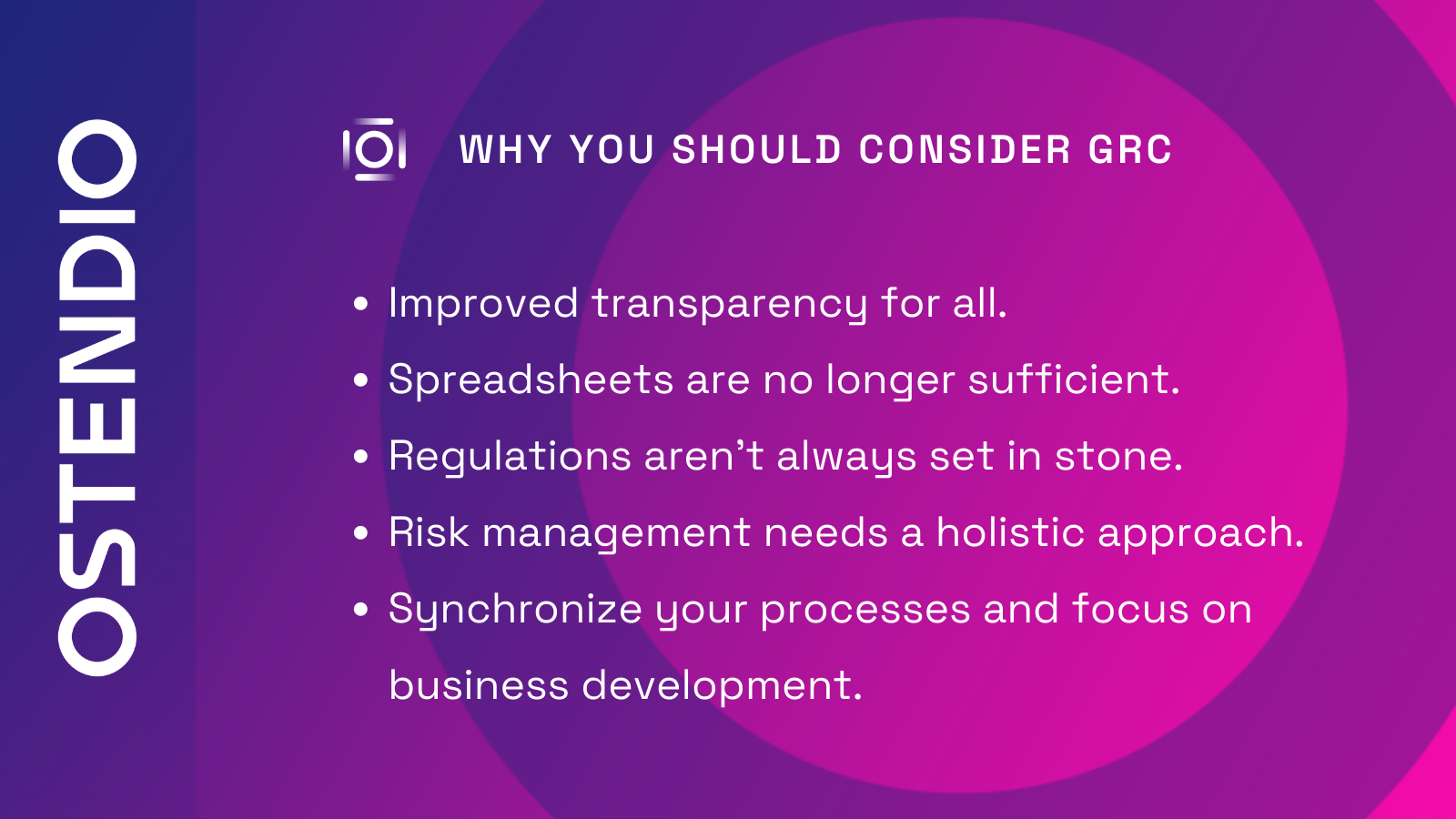
Here are a few reasons why your organization needs GRC:
- Improved transparency for all: Provide stakeholders increased transparency into data and how it’s stored and managed and a better understanding of performance throughout the organization.
- Spreadsheets are no longer sufficient: Managing a GRC program through spreadsheets seems like a good, inexpensive idea, but the results are ineffective–spreadsheets don’t have built-in security measures or controls, they’re not scalable, and they tend to be laborious when preparing for an audit.
- Regulations aren’t always set in stone: when implementing GRC into your organization, you’ll want to invest in a reliable GRC solution that enables you to keep up with evolving regulations and stay prepared for a security audit.
- Risk management needs a holistic approach: managing risk is only one piece of the puzzle. GRC gives your company better visibility into risk and helps you create a comprehensive cybersecurity program that ties together all facets of your organization.
- Synchronize your processes and focus on business development: the right GRC strategy will align all of your processes into one strategy to improve efficiencies and drive business growth.
What are the benefits of a GRC tool?
Those organizations seeking to employ a GRC program are often met with pushback that this program could potentially bring additional complexities and introduce unwanted bureaucracy into your company.
In reality, GRC helps reduce complexity by streamlining already complicated processes to help the business run more efficiently.
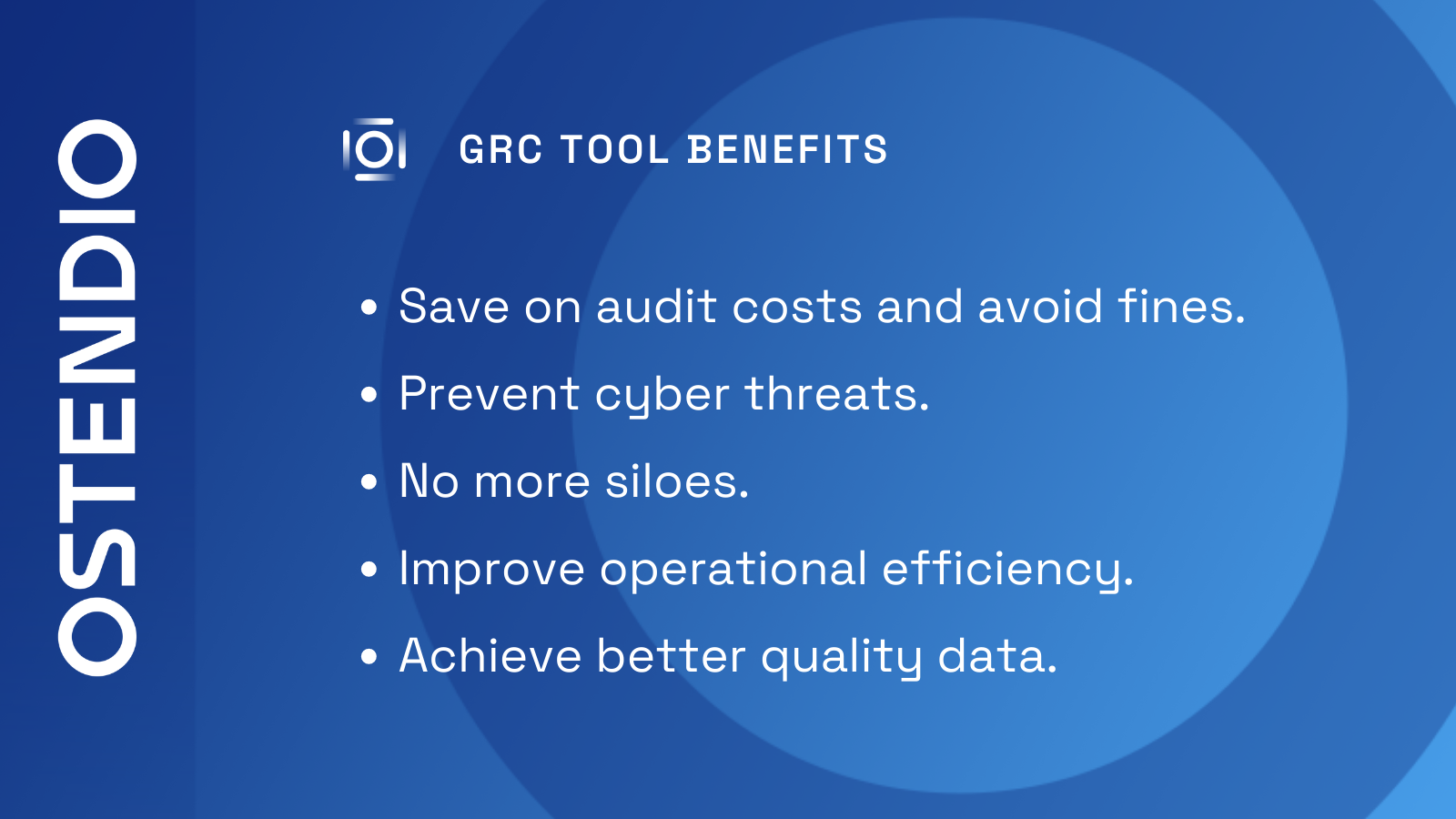
Here are a few major benefits of implementing GRC:
1. Save on audit costs and avoid fines
While GRC improves processes and aims to mitigate risk to an organization, your organization can also reap the benefits of audit cost savings. GRC also helps to reduce unnecessary spending, for instance, fines and penalties due to non-compliance or data breaches.
This improved operational focus can also lead to increased revenues down the line.
2. Prevent cyber threats
The “risk management” component of GRC does its job to keep your organization secure from cyber threats. With a robust risk management program linked to your overall security strategy, you will have a better understanding of potential risks, make more informed decisions about these risks and what risks you believe your company can manage, a transparent understanding of your business data location, and plans that mitigate risk now and in the future.
3. No more silos
GRC promotes transparency between departments, helping to reduce information silos in your organization. Siloed information and data typically result in trouble communicating and collaborating amongst teams, leading to redundant processes and elevated risk.
With a GRC strategy in place along with strong privacy policies, you can open up lines of communication and promote better collaboration, thus saving time and mitigating organizational risk.
4. Improve operational efficiency
Implementing a GRC program synchronizes your operational strategy and creates consistent, streamlined processes across the organization. As mentioned previously in this guide, a few examples of ways GRC improves business processes include enforcing corporate policies, making previous audits easier to find, and sending automatic notifications to staff for compliance training. This makes it easier for employees to collaborate and quickly locate necessary information, resulting in time saved and reduced costs.
5. Achieve better quality data
Not only does governance, risk, and compliance improve processes and eliminate silos, but it also improves the collection of better data. Your GRC team will have an overall better understanding of the organization and be able to make more informed decisions.
What features should I consider in a GRC tool?
There are many noteworthy features to add to your GRC must-have list from version control to scalability to document management -- we’ve rounded up 10 Tips for Choosing Between GRC Tools here.
There’s a lot to consider when looking for a GRC tool for your organization. With many platforms on the market, one might wonder, are there GRC tool requirements to consider, and which ones should I prioritize?
Here are a couple key features to reconsider in your GRC tool search:
- GRC on auto-pilot: when solutions tout security and compliance automation, sometimes this may seem too good to be true. And that’s often the case. Security and compliance cannot be automated, as demonstrated throughout much of this guide. While the right GRC tool will help your organization improve process, cut down on audit prep time and save on costs, it’s important to note that GRC is not a “set and forget” strategy. It needs to be implemented properly and compliance changes require a hands-on approach.
- GRC with the flip of a switch: no business is created equal, and neither is a GRC strategy. Implementing your security and compliance program on a GRC platform takes time. While some solutions might advertise getting you up and running quickly, this doesn’t always equal success. Building a GRC program should be unique to your organization and conducted thoroughly with stakeholders and security experts. The process should be smooth and efficient, but it’s not something you simply “turn on.”
How to Build a Business Case for GRC Software
Whether at the request of executives or the need to meet regulatory requirements, more organizations are moving to adopt a GRC program. Organizations have recognized that spreadsheets are no longer adequate for the management of governance, risk, and compliance, and unrealistic to expect a risk or compliance manager to compile, maintain and track an organization’s data without the help of specialized GRC software.
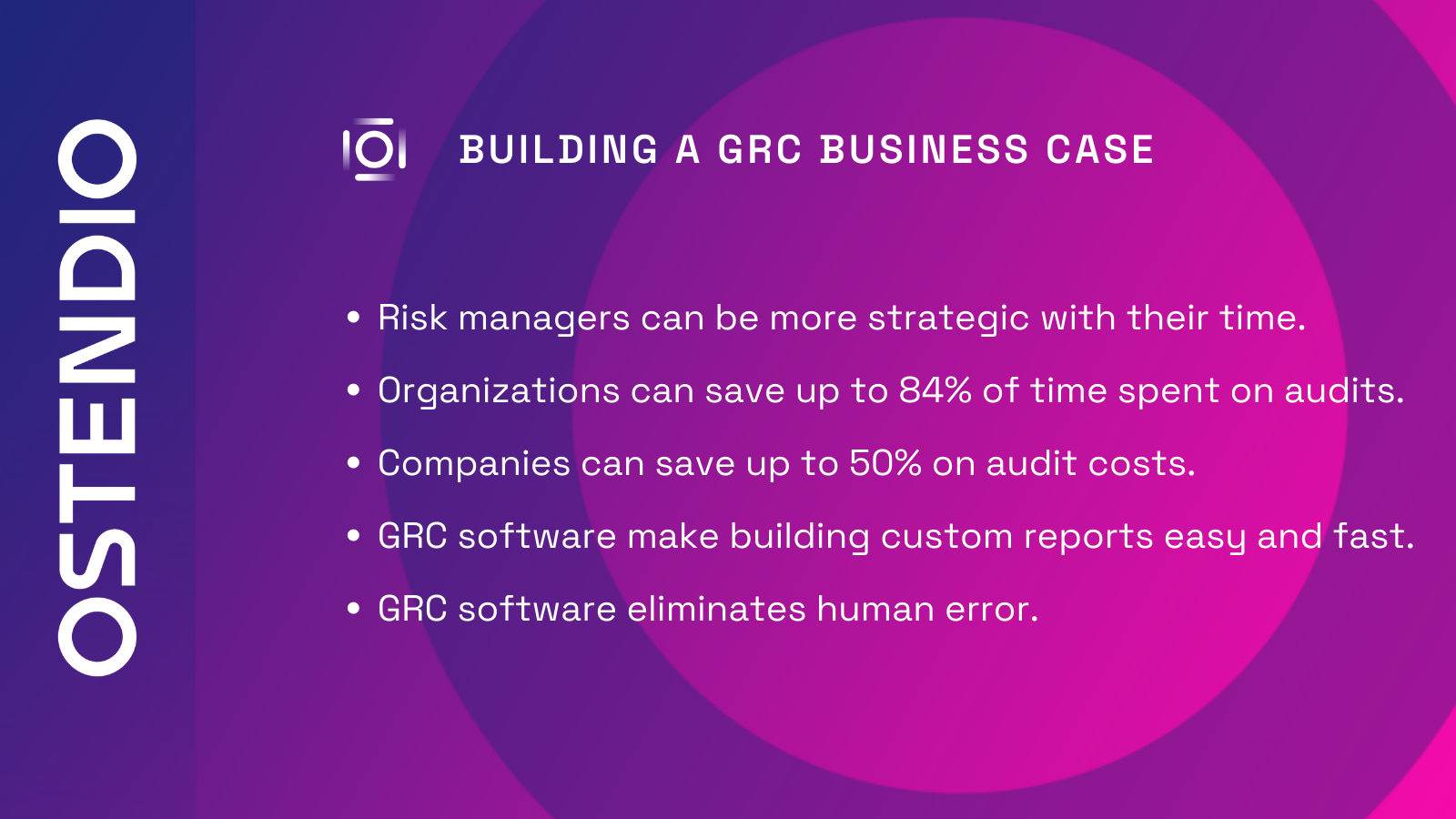
If you’re preparing to make a case for GRC software at your company, below are some arguments you can bring to the table:
- Risk managers can be more strategic with their time
- Organizations can save up to 84% of time spent on audits with a streamlined, collaborative GRC system that eliminates back and forth between GRC professionals and auditors
- Companies can save up to 50% on costs associated with outsourced auditors by implementing a GRC solution with a built-in auditor network
- GRC software makes building custom reports easy and fast
- GRC software eliminates human error and tedious compliance management caused by spreadsheets
Alternatives to GRC
Investing in a GRC solution is only the start of investing in better security and compliance for your organization. With cyber threats increasing all around us, having a traditional GRC solution isn’t quintessential. Your security program must be always-on, and always-auditable.
Tools like MyVCM help you save time on audit preparation by centralizing your GRC strategy into one tool for your entire organization. The platform’s eight feature modules create a one-of-kind security software that helps you gain confidence in your compliance so you can worry less about an upcoming audit.
Getting started with MyVCM is easy. Once you’re ready to get your program up and running, Ostendio’s team of former auditors and security experts will guide you through initializing your instance of MyVCM with a full implementation plan to ensure your organization is set up for GRC success.
Copyright ©2024 Ostendio, Inc.
All rights reserved
Call us! 1-877-668-5658
Privacy Policy · Terms Of Use · Acceptable Use Policy
.png?width=80&height=80&name=Untitled%20design%20(4).png)





